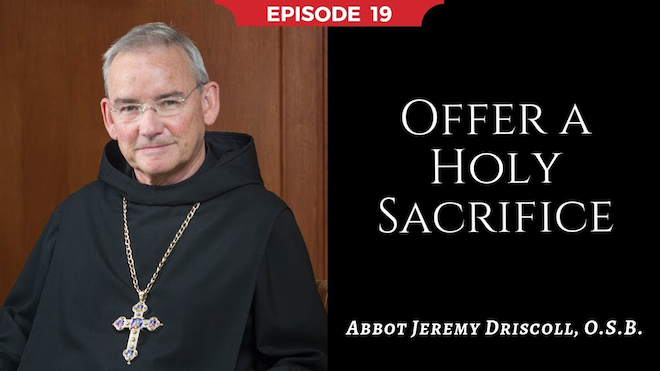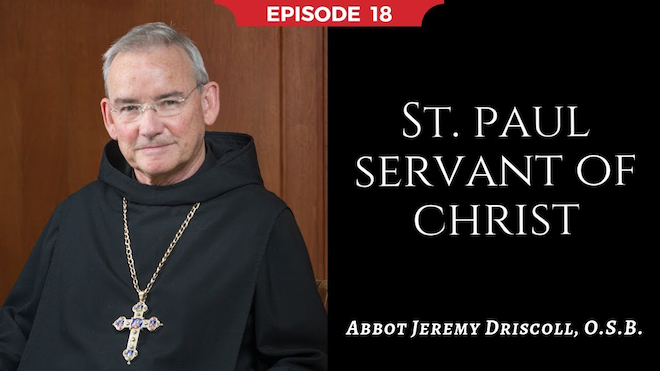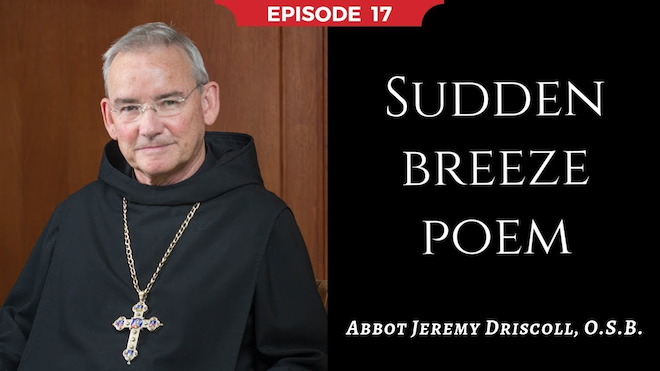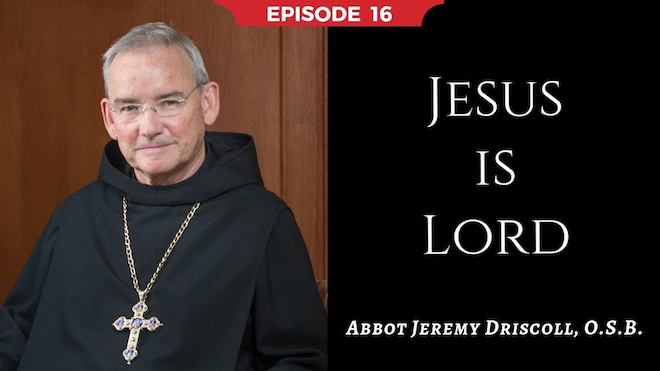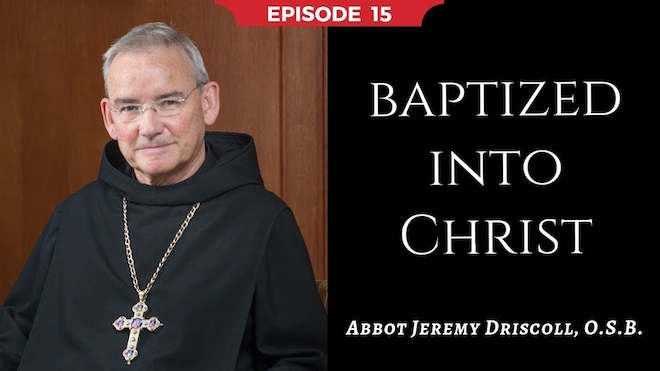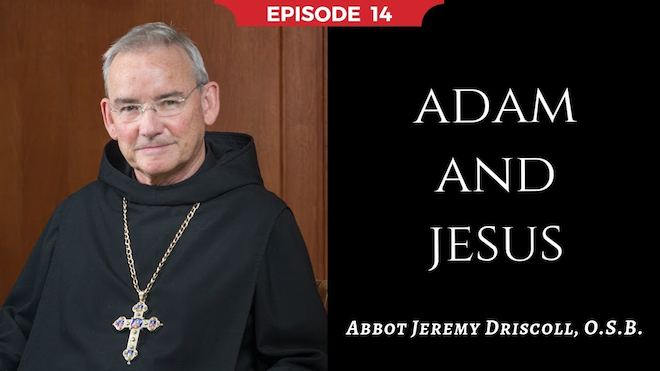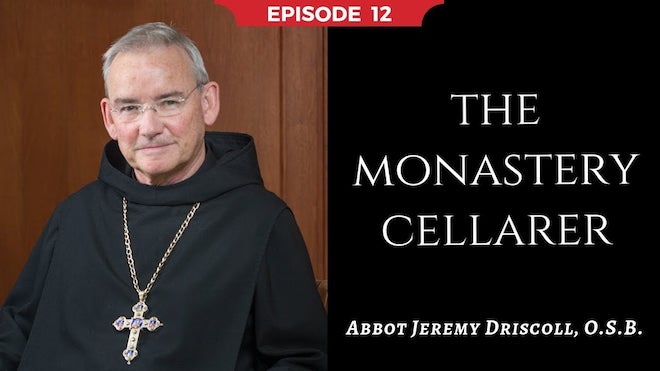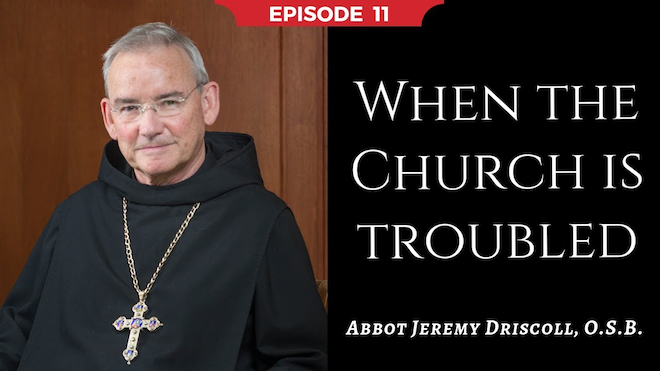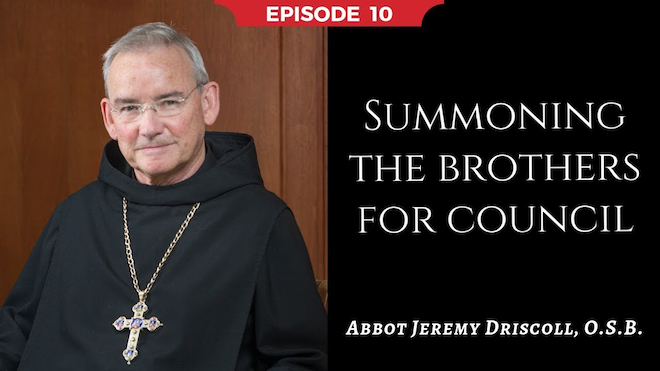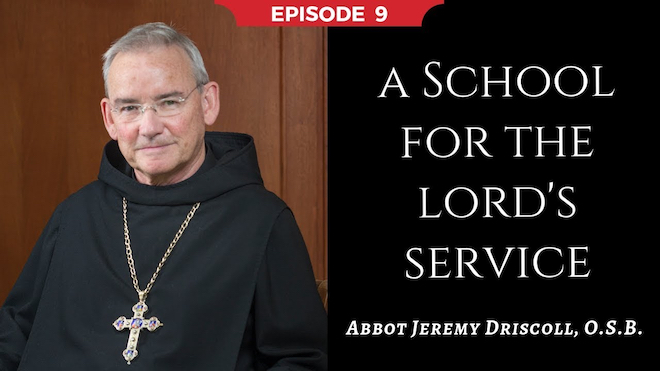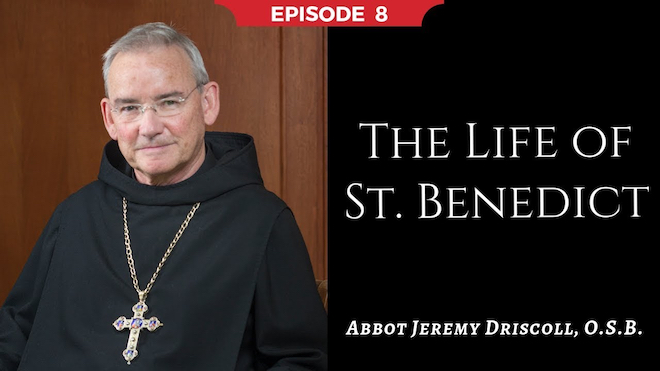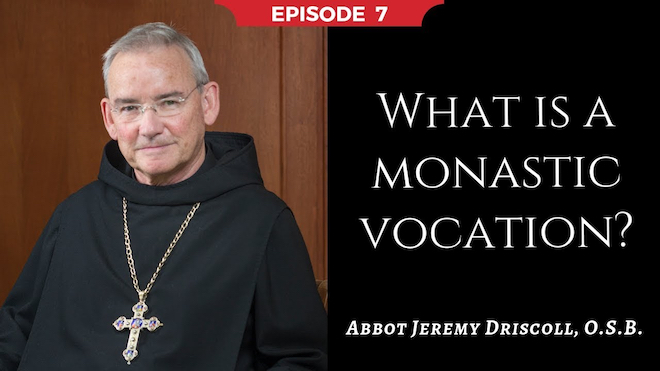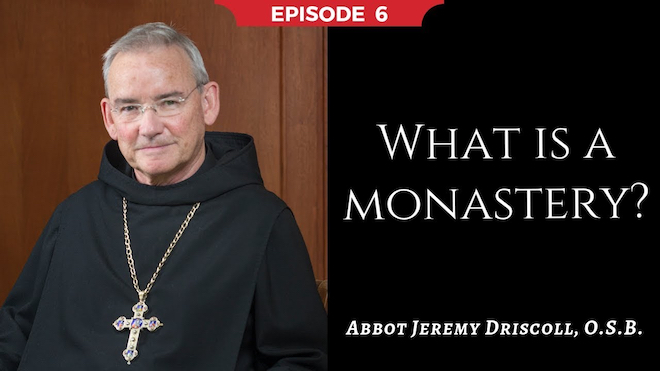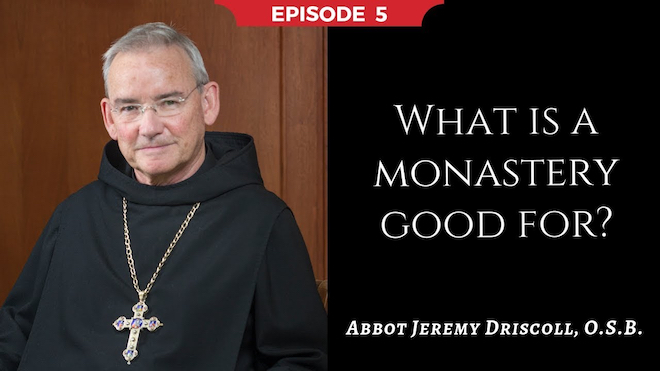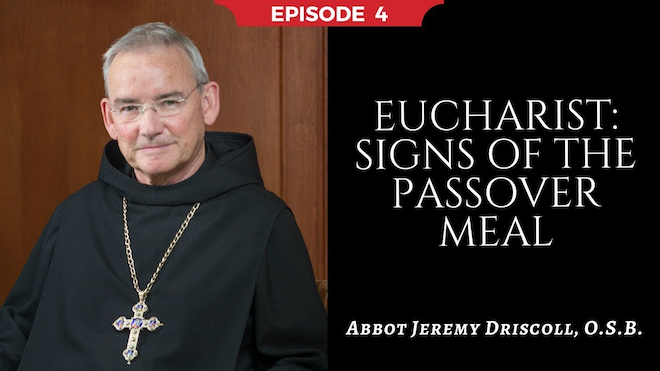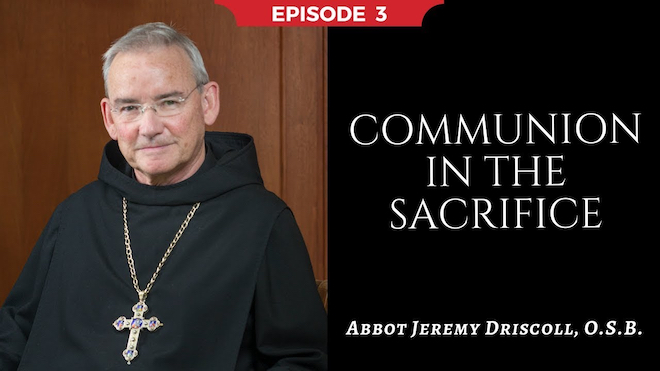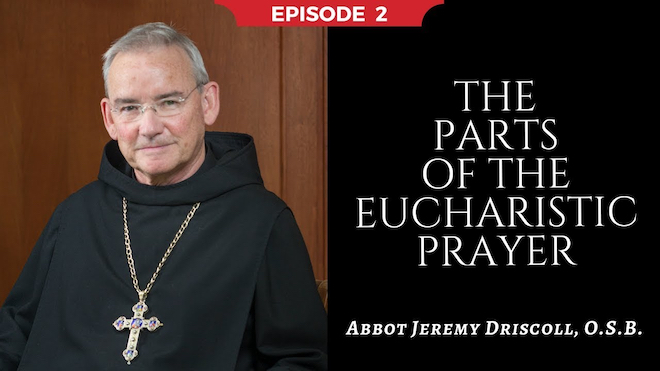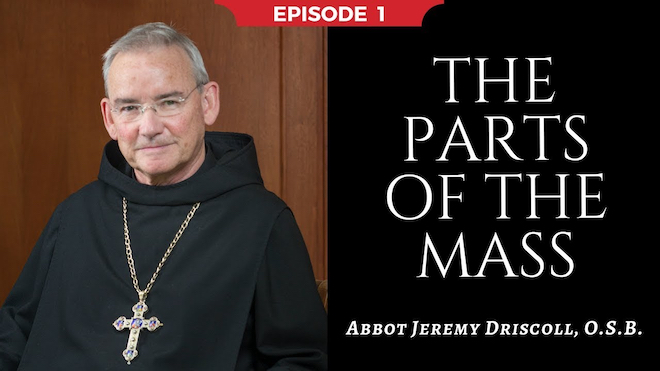Video Archive
Spiritual and Catechetical Reflections
Listen in as Abbot Jeremy captures the excitement of what it truly means to be alive in Christ as he reads from St. Paul’s Letter to the Romans, chapter 12. For Paul, this chapter is a turning point, a culmination of what it means to be a follower of Christ. Paul appeals to us, who are baptized, to be “living sacrifices, holy and acceptable to God.” This means that through the way we live our lives we become the temple of God, alive with good deeds, allowing the life Christ to shine through our thoughts, words and actions. It requires a renewal of our minds to be one with the mind of Christ, to choose to stand in truth.
Learn to read Scripture the way the monks do! From the early hours of the morning and into the evening, the monks of Mount Angel Abbey read Scripture. Some passages are read every day, others less often. Sometimes they read as a group, as during the Liturgy of the Hours. Other times, they read in solitude. But the Scriptures are never quickly scanned so as to move on to the next thing. In this episode 18 of his video series, Abbot Jeremy demonstrates how rich, inspiring, and beautiful a passage from the Letter of Paul to the Romans is when read slowly, savored and contemplated.
In episode 17, Abbot Jeremy reads his poem, “Sudden Breeze”. He explains the meaning behind this poem and the reasons why he writes poetry. Abbot Jeremy is a big advocate for poetry and shows us how to find deep theological meaning even in short poems like the one he shares with us on this video. Let us find a greater appreciation of and find meaning in the theology of everyday life, such as short poems and small encounters.
As we contemplate the Infant Jesus in the manger during this Christmas season, it’s easy to consider the humility of the Son of God become man. In this 16th episode of his video series, Abbot Jeremy draws from the Letter of Paul to the Philippians to show that humility continued to be Jesus’ attitude and way of being throughout his earthly life. In the Letter of Paul, we are advised to have “the same attitude … in Christ Jesus, Who, though he was in the form of God, did not regard equality with God something to be grasped. Rather, he emptied himself, taking the form of a slave, coming in human likeness… Because of this, God greatly exalted him and bestowed on him the name that is above every name, … Jesus Christ is Lord, to the glory of God the Father.”
Abbot Jeremy, in episode 15 of his video series, draws from the Letter of St. Paul to the Romans (6:3)to reflect on what it means to “die and be buried with Christ.” It means that through this burial with Christ, we can rise and “walk in newness of life.” Because of our baptism, we are called to live a brand new way of life, a life free from sin and alive to God, in Christ Jesus. That’s where life is. As Christmas morning approaches, let us prepare to welcome the coming of Christ into our lives and into our world.
In this video episode, Abbot Jeremy looks toward the coming of the Christ Child at Christmas and reflects on how we are a new creation in Christ, the Son of God. “How much more did the grace of God and the gracious gift of the one person Jesus Christ overflow for the many” (Romans 5:15). Oh, come, let us adore him!
In episode 13, Abbot Jeremy shares with us a poem he wrote called Advent Vespers. With Advent starting this Sunday, Abbot Jeremy’s poem can get us in the mood for the season of Advent followed by Christmas.
In episode 12, Abbot Jeremy talks about Chapter 31 in the Holy Rule of St. Benedict called the Qualifications of the Monastery Cellarer. It is the monk that is in charge of all the goods in the monastery. “As cellarer of the monastery, there should be chosen from the community someone who is wise, mature in conduct, temperate, not an excessive eater, not proud, excitable, offensive, dilatory or wasteful, but God-fearing, and like a father to the whole community.”
What can we do to address the serious issues facing the Church today? That is the topic addressed by Abbot Jeremy in episode 11 of his video series. To address the question, he draws from the 20th century Swiss Catholic theologian Hans Urs von Balthasar’s book on the great Catholic novelist, Georges Bernanos. A refreshingly positive response to a troubling question. What is your response?
In episode 10, Abbot Jeremy talks about summoning the brothers for Council (Rule of St. Benedict, Ch 3). In modern terms, this could be titled, “How to attend a meeting.” We all have meetings in life, and they usually mean someone will win and someone will lose. In the Abbey, though, all come together, and the Abbot hears the advice of all the brothers and then judges the wiser course. And with great sensitivity, St. Benedict recommends listening to the younger members of the community when a decision is particularly difficult. Because, he says, “The Lord often reveals what is better to the younger.”
In episode 9, Abbot Jeremy talks about the monastery as a “school for the the Lord’s service.” Some may think of the monastic life as a life of strict or harsh discipline. But the Rule of St. Benedict recommends a discipline that is neither harsh nor burdensome. Instead, the discipline of monastic life is intended to “amend faults and safeguard love.” It’s a plan designed to help each person grow in love, for God and for one another.
In episode 8, Abbot Jeremy talks about the life of St. Benedict according to his Holy Rule. St. Gregory the Great wrote about many saints in the Church, including St. Benedict. But St. Gregory said if you want to know who St. Benedict was, read the Holy Rule. Abbot Jeremy illustrates the story of St. Benedict quietly reading Scripture when a barbarian noisily brings a poor man – who was tied up with rope – in front of him and tries to get money from St. Benedict. St. Benedict looks at the man and all the ropes fall off of him. The lesson we can take away from this story is how to look at the world through the lens of Scripture.
In this video, episode 7, Abbot Jeremy talks about the heart and soul of the monastic vocation. God calls out to the multitude of people and asks, “Is there anyone here who yearns for life and desires to see good days?” If our answer is, “I do,” then God responds and says his eyes will be upon you, his ears will hear your prayers, and he will say to you, “Here I am.”
In episode 6, Abbot Jeremy explains what a monastery is by reflecting on the Prologue of the Holy Rule of St. Benedict. “Seeking his workman in a multitude of people,” God calls all of us to serve him in a practical way by changing our lives, by keeping our tongues from vicious talk and our lips from all deceit. Our culture needs this more than ever, and our relationship with God starts with our relationship with those around us. Let peace be our aim.
In episode five, Abbot Jeremy shows us the insightful contributions of the monastic life. Beyond just a life of prayer, monastic life can be a commentary on our contemporary culture, presenting a challenge and call to beauty, goodness, and tradition. “Is there anyone here who yearns for life and desires to see good days?” says the Rule of Benedict. It is a question posed not only to monks, but to all people. [Is our answer, “I do?”]
In episode four, Abbot Jeremy illuminates the profound meaning of the signs of the Eucharist, the bread and the wine, that become the Body and Blood of Christ. This is the liberating sacrifice of Christ on the cross; it is also the covenant of the love of Christ that binds to Himself all who receive the Eucharist.
In episode three, Abbot Jeremy explains the significance of receiving Holy Communion during the Mass in which the hosts are consecrated. This reception of Communion following the consecration of the bread and wine signifies the faithful’s participation in the sacrifice actually being celebrated. The signs within the liturgy point to Christ, revealing himself to his people.
In episode two, Abbot Jeremy talks about the Eucharistic Prayer, the highpoint of the Mass in which the entire congregation joins with Christ in a prayer of thanksgiving and praise. All together, with all of the angels and saints, we sing “holy, holy, holy” as we are made one body and one spirit in Christ.
In this first video, Abbot Jeremy Driscoll, O.S.B., talks about the different parts of the Mass and how the Liturgy of the Word flows naturally into the Liturgy of the Eucharist. Above all, Abbot Jeremy explains the importance of the participation of the congregation – the “assembly” – in each part of the Eucharistic celebration.

